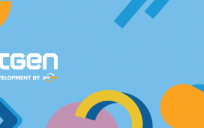With technology advancing as quickly as it is these days, it can sometimes be hard to keep up. New phones, apps, software, and social media seem to pop up every day. Even though this constant stream of innovation is intended to make all of our lives easier, new technology can also present unprecedented challenges to individuals and organizations. The public sector is no exception to this rule.
In the 21st century, public servants are under more pressure than ever before to adapt to changing times and technology. Marvin Pichla, owner of and creative advisor for the public sector consultancy service Inspiring Innovations, wants to help feds adapt to the increasing number of “change-challenges.”
In an interview with Chris Dorobek on the DorobekINSIDER program, Pichla discussed his recent article, which outlined the three biggest change challenges public servants face in the 21st century and the steps government leaders can take to help them tackle these challenges.
Complex Problems, Simple Solutions
“Change-challenges” are those issues brought up by new technologies, demands, or social changes that put unmitigated strain on the federal government’s traditional structure. According to Pichla, most of these modern challenges do not yet have a track record of good solutions in the public sector. While public servants at all levels of government face a number of change-challenges, Pichla identified three problems virtually all public servants face in the 21st century.
1. Communication overload
With the Internet, smartphones and social media, the public has virtually instant access to information, sometimes before the government does. Digital platforms allow the public to access videos, images, and other information before even the news systems get a hold of it. The instantaneous nature of communication presents a whole series of communication challenges to government leaders.
Traditional government frameworks often take more time to both relay and respond to new information than what’s viable in the digital age. Addressing communication overload won’t be easy for any agency. However, Pichla argued that the overwhelming amount of information, “…allows public workers the opportunity to be creative in their solutions.”
To facilitate quicker communication and overall responsiveness to the public, government leaders must adjust two structural problems: stringent hierarchies and information silos.
2. Strict organizational hierarchy
Traditionally, government agencies at every level have a strict hierarchy of leadership with separate, distinct roles. However, Pichla argued that strict hierarchies often lead workers to adopt a “that’s not my job” mentality. Stringent organizational structures give people “decision-making hiding places” to avoid responsibility, he said.
This diffusion of responsibility is detrimental to an agency’s responsiveness to fluctuating situations. So what can government leaders do? Pichla contended that managers should create a “structure that blends the decision-making opportunity and responsibility into everyone’s position.” Infusing leadership would lend people the ability to keep the system moving when things don’t go as planned, fostering government agencies’ overall agility. The more agile the government is, the easier it will be to respond to the public’s demands in a much faster and smarter way.
3. Intergovernmental cooperation (or lack thereof)
Information silos make it difficult for public servant to work between two federal agencies, and even more difficult to go between a federal and state or local agency. Hierarchical divisions among the different levels of government make intergovernmental cooperation a strenuous endeavor for public workers to undertake.
According to Pichla, resource blending among agencies at every level of government would facilitate information sharing and cooperation. “If you approached [collaboration] in a joint-venture mode, having cooperative ownership among different units government,” you would avoid the “I can do it better myself” mentality that many agencies adopt, Pichla explained. By breaking down silos between agencies and blending partnerships, government workers at every level would be able to respond to citizens’ demands more quickly and efficiently than ever before.
Lessons for the Modern Public Servant
Regardless of your position in the government hierarchy, “When people come through public doors, they look at you as a leader,” Pichla said. They don’t think about your job description; they are looking to you for solutions to their problems. As a result, each member of an agency must take on shared responsibilities, and government leaders must delegate those responsibilities more effectively.
In the 21st century, leadership is no longer found in the corner office. To meet citizens’ growing number of demands, leadership has to be everywhere and a part of everyone in government at all times. The government’s biggest challenges require creative solutions. People in power at every level need to have a “unit of creativity within their structure – not just a workshop that happens once a year,” Pichla said.
It is every leader’s responsibility to lend public servants the freedom to ask “why not?” to challenge the status quo. Government organizations should constantly be questioning what they can change to do things better. Pichla believes the more open a workplace environment is, the better the results will be. “Innovation and creativity are meant for the public sector too,” he concluded.
Tackling change-challenges may involve adopting some non-traditional partners and approaches, and the rewards may not come right away, Pichla admitted. While his solutions are simple, they aren’t easy. But neither are the change-challenges that government faces today. To respond to these challenges, public servants must adopt more innovative approaches, blending resources and infusing leadership to form a new, more agile government structure fit for the 21st century.





Excellent post, Olivia!